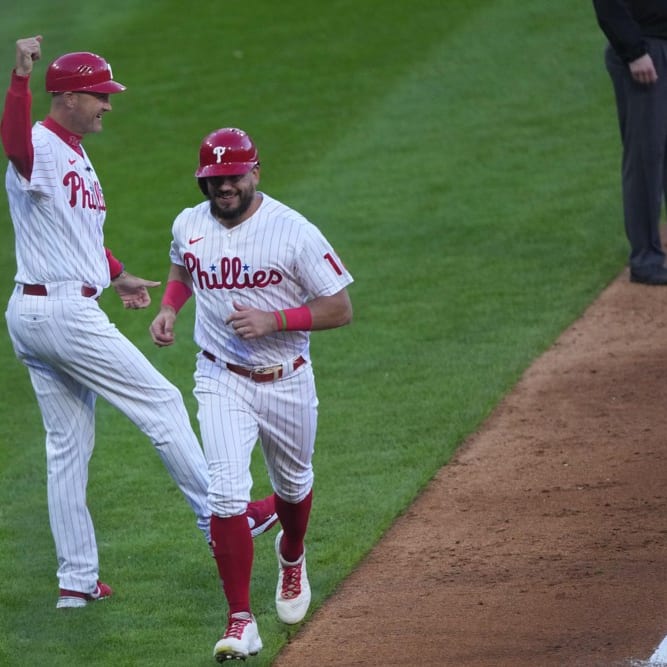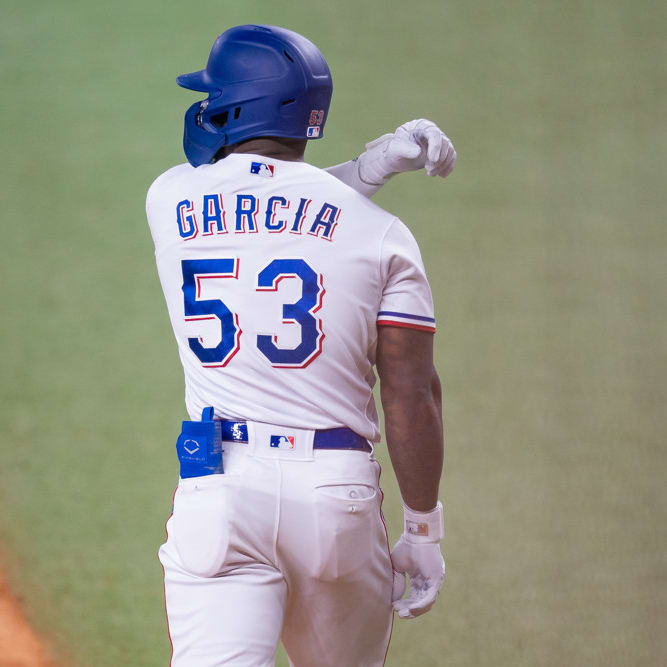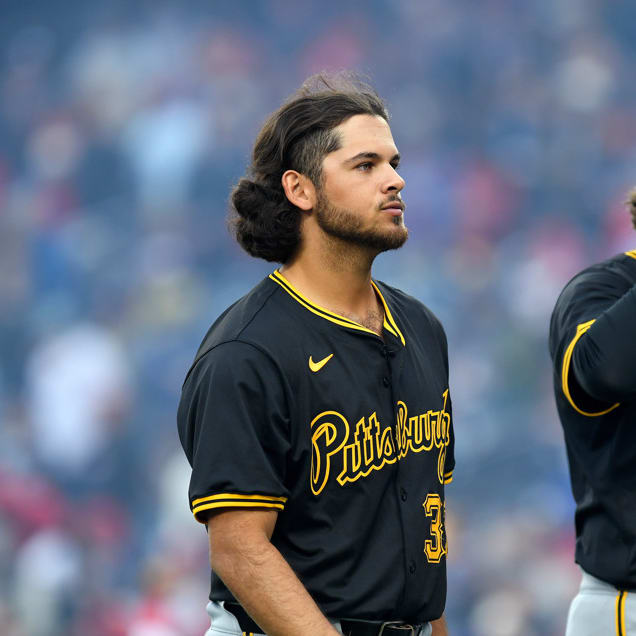This article is part of our The Long Game series.
Last week, Vlad Sedler noted some odd trends among Diamondbacks power hitters in NFBC drafts:
Seeing a lot of overcompensation with concern for the humidor in Chase. Goldy 15th overallLamb six rounds past ADPPeralta/Avila still undrafted in the 25thIt's a little bit much.
— Vlad Sedler (@RotoGut) February 21, 2018
The cause of those drops, as Vlad indicated, was concern over the installation of a humidor at Chase Field. As no games have been played there yet with the humidor running, all we really have is speculation as to what the effects might be, and the early speculation has tended towards the extreme side. The most widely quoted number, from Prof. Alan Nathan at the University of Illinois, suggested a 25-50 percent drop in homers, a stunning change in one of the league's more prominent hitter's havens if it happens. Prof. Nathan took a purely physics-based approach to get his estimate, but we have a similar situation we can refer to in order to see just how realistic that 25-50 percent drop might be, and that's the impact of the Coors Field humidor.
The most widely quoted number for the drop in home runs at Coors Field since the humidor was installed prior to the 2002 season has been 22 percent, but since I can't find where that number came from, I went back to the raw data to see just what has happened in Denver. Not to go all Buzzfeed here, but the answer may surprise you.
I pulled all these numbers from baseball-reference.com, and pulled them directly from the ballpark splits. In other words, these numbers are based only on home runs hit in National League parks – interleague play in AL parks and neutral-site games have been discarded.
From 1995-2001, Coors Field averaged a mammoth 246.43 home runs per season, or 3.10 per game. After the installation of the humidor, from 2002-2017, Coors dropped to 2.30 homers per game. That's a reduction, not of 22 percent, but nearly 35 percent! Of course, those numbers aren't controlled for anything like who exactly was playing in Coors Field at the time, but still, score one for Prof. Nathan.
Let's not be too hasty, though. It's important to remember what the humidor is intended to do. Reducing home runs is not, in and of itself, the goal of using a humidor at high altitude, but is merely the end result. The goal is to normalize the baseball. At high altitude, the air is both thinner and drier, and untreated balls become physically smaller and lighter. Storing them in a humid environment counters this effect, and gets the balls back into the standard range you'd find in parks closer to sea level.
So, let's approach this from another angle. From 1995-2001, non-Coors Field NL parks surrendered 1.93 home runs per game. From 2002-2017, they surrendered 1.85 per game. In the pre-humidor period, Coors allowed a ridiculous 60.5 percent more home runs per game than other NL parks. After the humidor was installed, that boost plummeted to just 24.2 percent – Coors lost about 60 percent of its homer-friendliness. You can see why installing the humidor was even attempted in the first place, because those numbers were crazy.
There's one more wrinkle, though. Looking at those figures, the period from 2002-2004 stands out. For the first three years of the humidor's existence, home runs per game sat between 2.60 and 2.68 per game at Coors. After that, long balls really took a nosedive, dropping to 2.04 in 2005 and only rising above 2.50 in one season since (surprisingly, it was 2016 and not 2017). This could just be a small-sample fluke, but there is some evidence to suggest that the Coors Field staff were tinkering with the settings on the humidor for the first few years they had it before finally arriving at a humidity and temperature they liked. The Denver Post, for instance, reported in May 2005 that then-Rockies president Keli McGregor had made an official request to MLB to turn up the settings. As such, I'm going to ignore those three years (call it a probation period for the humidor) and only look at 2005-2017. During that period, Coors allowed 2.21 homers per game while non-Coors NL parks allowed 1.83, a difference of just 20.8 percent – making the loss of Coors' homer-boosting powers closer to two-thirds rather than 60 percent.
So what does all this mean for Chase Field, home of the Diamondbacks?
Well, there's two ways to look at it. If you assume that Chase will see the same kind of raw drop Coors did, then a 25-50 percent reduction in home runs is entirely plausible, and those plummeting ADPs on Arizona power hitters are entirely justified. While Vlad didn't mention it, this should also result in rising ADPs for pitchers like Robbie Ray and Taijuan Walker.
On the other hand, Chase was never a huge outlier as a home-run friendly ballpark. During that 2005-2017 period, Chase allowed 2.08 homers per game, around 25 percent above the non-Coors NL park average. If you apply a two-thirds reduction to that figure, Chase Field winds up being only around eight percent higher than other NL parks, putting it somewhere around 1.98 homers per game – a decrease, compared to its own history, of only about five percent.
Five percent, to state the obvious, is a long, long way from 25-50 percent.
Remember, the point of the humidor is to make the baseballs used in that park more like baseballs used everywhere else, not to make them impossible to hit over the fence. If Chase goes from being a very homer-friendly park to just a mildly homer-friendly park instead of a de facto cavern, it's going to have very little impact on guys like Paul Goldschmidt or Jake Lamb, and some NFBC GMs will have gotten some great bargains.
Keeper and dynasty league owners, of course, will also see buying or selling opportunities depending on which theory you choose to back – or if you choose to back one at all. If you think Chase Field is about to become a pitcher's park, trading away D-backs sluggers and acquiring D-backs pitchers while their perceived value is still based on their home park's existing reputation could prove to be very profitable. On the flip side, if everyone else in your league has seen that 25-50 percent estimate and is in a panic about Chase Field becoming the new Petco Park, make some low-ball offers for Goldy and Lamb and see if you can pick up some assets that may not be as distressed as their current owner thinks they are. In times of uncertainty, being agnostic about the outcome and simply zigging where everyone else is zagging carries more risk as you break away from the herd, but it also offers potentially bigger rewards.
There's one more thing I should point out about the impact of the humidor in Coors, and what it might mean for Chase. By climate-controlling the baseballs, the biggest impact the humidor seems to have had on seasonal home run totals is reducing their volatility. This makes intuitive sense. While the baseballs in other parks have to endure summers that might be more or less humid than usual, Coors Field removes that factor from the equation. Pre-humidor, the standard deviation on the seasonal home run totals at Coors was 27.2 – slightly higher than, but still in line with, the volatility of other parks regardless of how homer-friendly they are, such as Chase Field (23.4), AT&T Park (23.5) and Busch Stadium (25.3). Since 2005, however, Coors Field's standard deviation has been only 17.5, far below other venues. To put that in fantasy-relevant terms, homer totals at Coors have been more predictable than other parks, making the projections on their players a tiny bit more dependable. If that holds true for Chase Field as well, it's a nugget of info that could be a useful tiebreaker going forward if you have a choice between an Arizona player and someone in another uniform.











